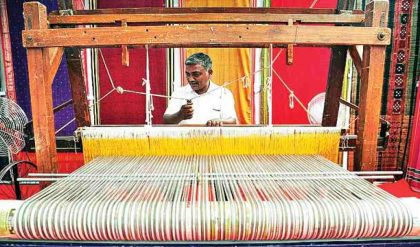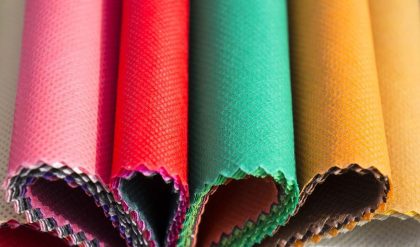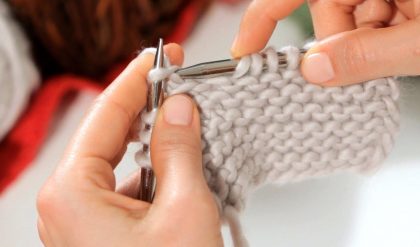Shearing
Sheep are generally shorn of their fleeces in spring but the time of shearing differs in different parts of the world. Machine clippers remove the fleece faster and closer than hand clippers. Superior wool variety comes from the sides and shoulders where it grows longer, finer and softer is treated as good quality fleece. Wool from the chest ,belly and shanks is treated as a second fleece.
Preparation
An average about 8 pounds of fleece is made from one sheep. Then the fibers are packed in bags or bales. The raw wool or newly sheared fleece is called Grease wool because it contains the natural oil of the sheep. When Greese wool is washed, it loses from 20 to 80% of its original weight. The grease known as yolk is widely used in the pharmaceutical industries for lanolin compounds.
Sorting and grading
Skilled workers do wool sorting. Each grade is determined by type, length, fineness, elasticity and strength. Separating of fibre by touch and sight.
Scouring
Washing of raw wool is an alkaline solution is known as scourcing. The wool is treated with warm water, soap, mild solution of soda ash or other alkali to remove dirt in the fibres. If the raw wool is not sufficiently clear of vegetable, substance after scouring is put through the carbonizing bath.
The fibres are then put through a dilute solution of sulphuric or hydrochloric acid which destroys any vegetable. This process is called as carbonizing and resultant wool is called ‘extract’. To remove the Grease and dirt in raw wool it is put through a series of naphtha balls followed by clear water to remove the naphtha. This is called naphtalation. This process improves the dye uptake property of wool.
Blending:
Wool of different grades or pure wool fibres and other textile fibers may be blended mixed together at this point. All the information should be present on the labels.
Carding:
The carding process introduces the classification of woolen yarns and worsted yarns. It makes the fibre parallel and some amount of dirt is removed due to straightening of fibres. Fibres are used for the worsted yarn are more straightened than the wool yarns.
Gelling and combing:
The carded wool which is to be made into worsted yarn is put through gilling and combing operations. The geilling process removes the shorter staple and straightens the fibre. This process removes short fibres from 1 to 4 inch length places the long fibre as parallel as possible and further cleans the fibre by removing any remaining loose impurities.
Drawing:
Drawing is an advanced operation for worsted yarns which doubles and redoubles slivers of wool fibres. The process draws, drafts, twists and winds the stock making slivers more compact and thinning them into slubbers.
Roving:
This is the final stage before spinning roving is actually a light twisting operation to hold thin slubbers intact.
Spinning:
In the spinning operation the wool roving is drawn out and twisted into yarn. Woolen yarns are chiefly spun on the mule-Spinning machine are worsted yarns are spun on any kind of spinning machine mule, ring, cap or flyer.



